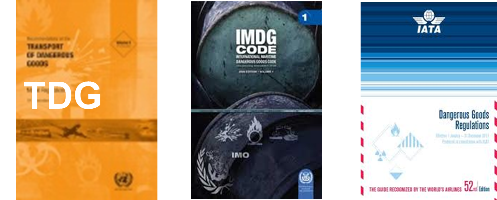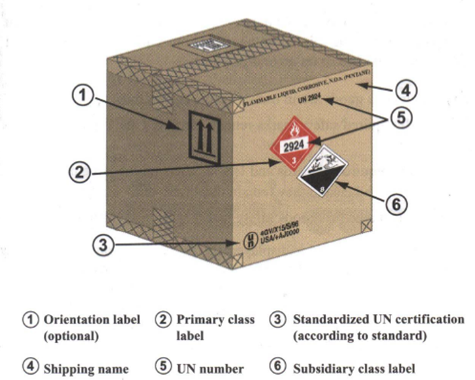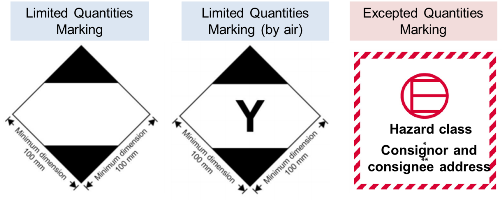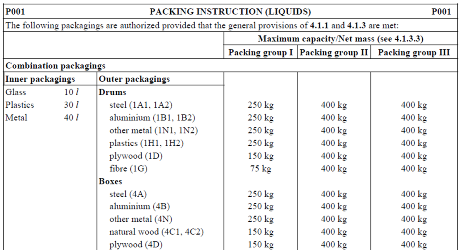Introduction to TDG
Little Pro on 2016-01-07
The UN Recommendations on the Transport of Dangerous Goods Model Regulations (TDG Model Regulations) is a guidance document developed by the United Nations to uniform the development of national and international regulations governing the various modes of transport of dangerous goods (by air, by road and by sea). Most of dangerous goods regulations such as IMDG Code, IATA and other national regulations are developed based on this Model Regulations. .

In this article, we will give you a brief introduction to the Model Dangerous Goods Regulations in the following order. We will provide as many examples and pictures as possible to make this guide easier to understand.
- Classification of Dangerous Goods & Hazard Symbols;
- UN Number, Proper Shipping Name and Packing Group;
- Understanding Dangerous Goods List;
- Marking & Labelling;
- Limited Quantities & Excepted Quantities;
- Packing Instructions;
- Placarding;
- Documentation;
- Other Important Notes;
General Principles for the Transport of Dangerous Goods
No person may offer or accept dangerous goods for transport unless those goods are properly classified, packaged, marked, labelled, placarded, described and certificated on a transport document. Persons engaged in the transport of dangerous goods shall be trained first.

Classification of Dangerous Goods & Hazard Symbols
Substances (including substances and mixtures), and articles are assigned to one of nine classes. Some of the classes are divided into divisions, e.g., Class 1, while others are not e.g., Class 3. The nine classes are:
- Class 1 Explosives
- Class 2 Gases
- Class 3 Flammable Liquids
- Class 4 Flammable solids; substances liable to spontaneous combustion; substances which, in contact with water, emit flammable gases
- Class 5 Oxidizing substances and organic peroxides
- Class 6 Toxic and Infectious substances
- Class 7 Radioactive material
- Class 8 Corrosive substances
- Class 9 Miscellaneous dangerous substances and articles, including environmentally hazardous substances
The picture below shows hazard symbols for Class 4 dangerous goods. You can download all hazard symbols for all 9 hazard classes above by clicking the picture below.
UN Number, Proper Shipping Name and Packing Group
Dangerous goods are assigned four-digit UN numbers and proper shipping names according to their hazard classification and composition. Several examples are given below:
- Example 1: UN 1090 ACETONE
- Example 2: UN 1993 FLAMMABLE LIQUIDS, N.O.S.
Selecting a correct propper shipping name is not easy. More info about how to assign a correct proper shipping name can be found here.
Dangerous goods (excluding articles) are further divided into packing groups (although some classes do not have packing groups, i.e. Class 2, Division 6.2 and Class 7) in accordance with the degree of danger they present:
- Packing Group I: high danger
- Packing Group II: medium danger
- Packing Group III: low danger
Only UN-approved packages are allowed to be used for packaging transported dangerous goods. UN-approved packages are packages that have passed specific performance tests and certified by authorities or qualified labs. There will be UN specification markings on UN certified packages (please refer to marking and labelling part).
Understanding Dangerous Goods List
The Dangerous Goods List in Chapter 3.2 of the Model Regulations lists the proper shipping names and UN numbers of substances most commonly transported. The picture below is an example of several entries in the Dangerous Goods list.

The dangerous goods list includes lots of useful information such as proper shipping name, hazard class, packing group and packaging instructions. More info about how to understand and download this list, please click here.
Marking & Labelling of Dangerous Goods Package
Dangerous goods packages must be marked and labelled before they are assigned for shipment. The differences between marking and labelling under TDG are listed as below:
- Marking: mainly refers to UN number, proper shipping names, UN specification marks and other markings if applicable(i.e. orientation arrows, environmental hazardous substances mark for UN 3077 and UN 3082 and excepted quantities mark);
- Labelling: mainly means hazard symbols (and handling labels) displayed on small means of packages (usually less than 450 liters) ;
The picture below shows how a dangerous goods package should be marked and labelled.

Limited Quantity and Excepted Quantity
Selected dangerous goods packed in small quantities (limited quantity) or very small volumes (excepted quantity) pose a lesser risk in transport than do the same goods packed in larger volumes. Thus they qualify for some relief from robust packaging requirements provided that they are packed and marked properly. This could save considerable packaging costs.

More info about limited quantities and excepted quantities can be found here.
Packing Instructions
The Packing Instructions consist of a small number of general instructions supplemented by a limited number of more specific instructions for particularly hazardous or specialized dangerous goods. The Packing Instructions are primarily intended for the person preparing the package for consignment. It can be found in the column 8 of the Dangerous Goods List.
The picture bellows shows the packing instructions for P001:

There are also packing instructions for ISO containers and tanks for different classes of dangerous goods. More info about packing instructions can be found here.
Placarding of Cargo Transport Units
Placards are affixed to the exterior surface of cargo transport units to provide a warning to other people and vehicles. The minimum dimension is 250mm x 250mm. Both hazard symbols and UN numbers shall be placarded (see examples below). Proper shipping name is not required.

Note: a cargo transport unit containing environmentally hazardous substances classified under UN 3077 and UN 3082 needs to be marked with the following environmentally hazardous substance mark. Additional marking is also required for dangerous goods transported at an elevated temperature.


Documentation for Dangerous Goods
Whenever dangerous goods are offered for transport, a dangerous goods transport document shall also be provided conveying basic hazard information about the dangerous goods to be transported. The following information is required for each of the dangerous goods offered for transport by any mode. Different authorities may consider requiring addition info.
- Consignor, consignee and date;
- Dangerous goods description: UN number, proper shipping name, primary and subsidiary hazard class and division, packing group, and technical names for "N.O.S" and generic entries; empty uncleaned packages, waste, and elevated temperature substances (i.e., MOLTEN) shall also be indicated;
- Total quantity of dangerous goods;
- Additional words: Indication of "limited quantities" or "excepted quantities" or "STABILIZED" or "SALVAGING PACKING" if applicable.
Note: Many consignments of goods are treated with fumigants that pose a risk during transport. Special documentation and warning sign requirements apply in the consignment.
Final Notes
Many countries and organizations may have additional requirements for transporting some dangerous goods. Such requirements are usually not addressed in the UN Model Regulations. Please refer to national regulations for more compliance info.
Reference & Resources
Recommended Readings
- How to determine UN number and proper shipping name
- How to understand and search dangerous goods list
- How to assign UN packing group
Having Questions?
We do not provide consultancy services. If you have questions or need any help, please contact our sponsor. You may also find an expert in CSP business directory below. If you are a consultant, you may get yourself listed in CSP business directory (free) or sponsor this page to leave your contact info on this page..

Tags: Topics - TDG, Dangerous Goods
